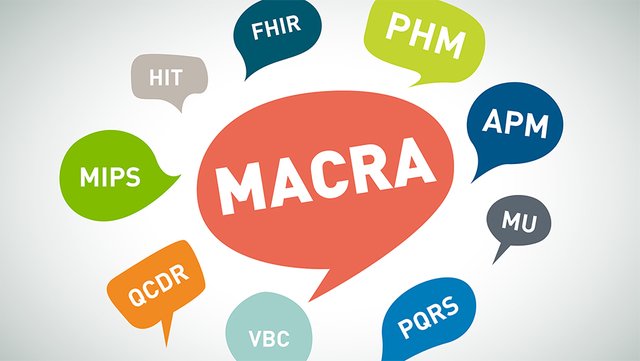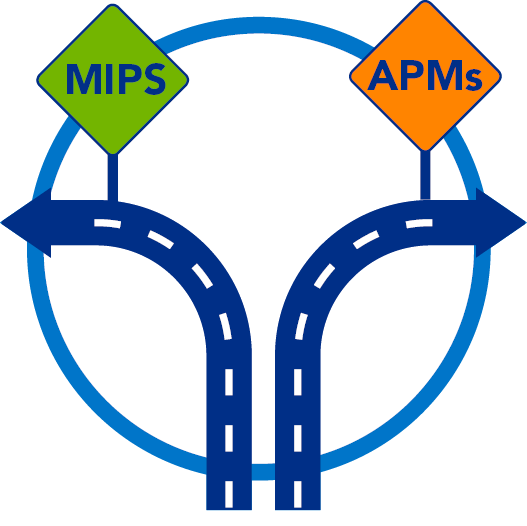MACRA 101: 9 Things You Need To Know


Congressional passage of the Medicare Access and CHIP Reauthorization Act (MACRA) last year was only the beginning of a major upheaval in Medicare reimbursements. This past April the other shoe fell – all 962 pages of it. The Centers for Medicare & Medicaid Services (CMS) released the Notice of Proposed Rulemaking (NPRM) providing the details on the plan to transition healthcare providers from a payment system based on volume to one that rewards value. MACRA is the next step in driving healthcare organizations from a fee-for-service to a value-based care reimbursement model.The massive NPRM document will be dissected and discussed (and maybe even read) for many months to come, but the implications for clinicians providing care under Medicare Part B are real and far-reaching. The major consequence for those of you who are Medicare providers is that you will soon have to choose to operate under a merit-based incentive program or transition to an Alternative Payment Model. Other than leaving the practice of medicine, there is no third choice.Here are nine things you need to know to help you begin digesting this next significant change in the healthcare industry. Who is affected by MACRA?Any clinician billing for professional services under Medicare Part B. MACRA doesn’t affect providers who do not bill for Medicare, Medicaid providers without Medicare patients, or pediatricians.MACRA also changes the familiar term “eligible providers” to “eligible clinicians” and expands it to include physicians, dentists, chiropractors, nurse practitioners, clinical nurse specialists, certified registered nurse anesthetists, physician assistants, physical or speech therapists, and hospital-based eligible providers.Exemptions are available for physicians new to Medicare, who have $10,000 or less in Medicare charges, have 100 or fewer Medicare patients, or who significantly participate in an APM. More on that later.MACRA does not affect eligible hospitals or critical access hospitals except for a few areas related to technology:Cooperating with the surveillance and oversight of certified EHR technologyAttesting that the EHR technology being used does not in any way block the bidirectional flow of dataAlthough MACRA doesn’t apply directly to long-term care facilities, it will apply to those institutions that bill Medicare Part B on behalf of the physicians who see their patients.After the NPRM was released, many voiced concerns about the impact the new requirements would have on smaller practices (typically defined as 15 or fewer physicians). In late April, CMS released a Flexibilities and Support For Small Practices fact sheet to address some of the concerns. The paper states that CMS is “committed to a continued dialogue regarding the obstacles and challenges” of smaller practices and “would provide accommodations for various practice sizes and configurations.”How does MACRA affect existing programs? MACRA consolidates and replaces a number of existing programs including:The Medicare Sustainable Growth Rate (SGR) – repealed as part of MACRAPhysician Quality Reporting System (PQRS) - Ends the adjustment as of the end of calendar year 2018. Incentive payment and adjustments are all rolled up under MACRAValue Based Payment Modifier (VM) – incorporated into two components of the merit-based option of MACRAMeaningful Use (EHR incentive) – incorporated and expanded in the incentive-based portion of MACRA What choices do I have?Eligible clinicians must choose between one of the two major segments of MACRA: MIPS, the incentive-based payment program or APM, and alternative payment model. What is MIPS?The merit-based incentive payment system (MIPS) is comprised of four components. Each receives a weighted score that will be totaled to calculate your composite performance score (CPS). The CPS will then determine your reimbursement. The four components of MIPS are:QualityThis is the performance measure of MIPS and accounts for 50% of the CPS. It replaces PQRS and the quality component of the Value Modifier Program.Resource UseThis accounts for 10% of the CPS and replaces the cost component of the Value Modifier program. This component will be calculated by CMS based on claims data so no clinician reporting is required.Clinical Practice Improvement Activities (CPIA)This makes up 15% of the CPS and will be based on improvement in selected measures in nine categories: care coordination, beneficiary engagement, patient safety and practice assessment, expanded practice access, population management, achieving health equity, emergency response and preparedness, and integrated behavioral and mental health. Additional areas and activities may be added in future years.Advancing Care Information (ACI)This component incorporates many of the EHR incentive elements and effectively replaces Meaningful Use. It combines a base score and a performance score and accounts for 25% of the CPS. A key part of the base score is Protecting Patient Health Information. This requires a yes or no response, and if you can’t answer yes, you get ZERO points for the entire ACI component regardless of your other achievements.An important note is that reporting data used to calculate these scores is not limited to providers’ Medicare beneficiaries.You will receive your reimbursement based on your final CPS score. Since MACRA is a budget neutral law, some clinicians will experience an increase and some will experience a decrease and payments will vary over the years. What is an APM?The only way clinicians can avoid the MIPS program is by significantly participating in an Alternative Payment Model (APM). The stated overall aim of an APM is to increase the quality of care to improve patient outcomes. To further that goal, CMS has developed a portfolio of APM’s in which a broad range of physicians and other practitioners can participate. In addition, there are multi-payer options and innovative models in Medicaid and commercial markets that qualify as APM’s.Examples of APM’s include Accountable Care Organizations (ACO’s), Patient Centered Medical Homes, and bundled payment models.To be considered an Advanced APM, a clinician or organization must meet the following criteria:Participant groups must bear a certain amount of financial riskPayments must be calculated using evidence-based quality measures that are reliable and validAt least 50% of participants must use certified electronic health record technology to document and communicate clinical care information in the first performance year (this increases to 75% participation in the second performance year)Beginning in 2019, clinicians who receive 25% of their Medicare payments through an Advanced APM qualify for a 5% Medicare Part B incentive payment. What is a QP and how do I become one?Qualifying APM Participants (QP) are eligible clinicians who have met certain criteria and are exempt from the MIPS model.The steps CMS outlines to determine a QP designation are:Whether the design of the APM in which the clinician is operating meets the criteria for an Advanced APMWhether an entity such as an Advanced APM entity with a group of individual eligible clinicians participate in the advanced APMWhether during a QP performance period the eligible clinicians in the advanced APM entity collectively have at least a specified percentage of their aggregate Medicare Part B payments recovered professional services or the patients who received covered professional services through the advanced APMWhether all of the eligible clinicians in that advanced APM entity are designated QP’s for the payment period associated with the QP performance periodBeginning in 2019, eligible clinicians participating in certain types of APM’s – a shared savings program or other demonstrated alternative payment model - may become QP’s through a determination process that occurs each year following the QP performance period with the first payment period being 2019.Beginning in 2019, QP’s will receive a 5% lump sum payment based on the QP’s estimated aggregate payment amounts for Part B covered professional services for the preceding year. How does MACRA change Meaningful Use?MACRA advances the CMS commitment to the use of technology in healthcare but focuses on clinicians in the Medicare environment. It phases out the existing Medicare payment adjustment at the end of calendar year 2018 but the EHR Incentive Programs for hospitals and professionals in the Medicaid program remain intact.The Advancing Care Information (ACI) component of MIPS mandates the use of certified EHR technology and compels clinicians to choose report measures that are specific to its use with an emphasis on interoperability and information exchange. The MACRA criteria categories that replace Meaningful Use are Protecting Patient Health Information, Patient Electronic Access, Coordination of Care Through Patient Engagement, Electronic Prescribing, Health Information Exchange, and Public Health and Clinical Data Registry Reporting. When do I need to start paying attention?Now. Data reporting begins with the full calendar year starting January 1, 2017. What should I be doing today?If you are not planning to participate in an APM, you will be subject to the MIPS program when the rule takes effect. You need to begin thinking about which elements in each MIPS component you’re going to report on, what incentives you’re going to be looking for, whether your workflow supports the new requirements, and whether your technology supports your workflow and can meet the new reporting demands. Incentives and adjustments will not take place until January of 2019 but they will be determined by the data you report starting January 1, 2017.You should also make sure you have a 2014 or 2015 Edition Certified EHR in place when reporting starts in January 2017. (By 2018, you need to be using a 2015 edition only).By January 1, 2017 you will also need to attest to your support for health information exchange and the prevention of information blocking. You will also have to attest to the Office of the National Coordinator for Health IT (ONC) that you are cooperating with their surveillance and oversight of your EHR.Finally, though it may not be your ideal choice for stimulating summer reading, you may want to consider wading through the MACRA NPRM to see for yourself the changes that are coming your way and beginning formulating plans on how you can best get your organization ready to adapt to them.For more information on value-based care, download our White Paper: The Shift to Value-Based Care: 9 Steps to Readiness today.